Want to become a home barista? These are the tools, tips, and the espresso bar setup to get you started.
I was always a tea-over-coffee person. But after getting off my antidepressants this year, which some call poor man’s cocaine, I needed something stronger to get me out of bed. That’s when I started my coffee journey with the help of some home barista friends.
So far, I enjoy making espresso as part of my morning routine. Previously, I had no routine despite my therapist gently suggesting it for years. Here, we’re talking about why you would want a home espresso setup, the best home espresso machines for beginners, the best coffee grinders, and all the essential tools and tips on how to get set up (including mistakes I made along the way).
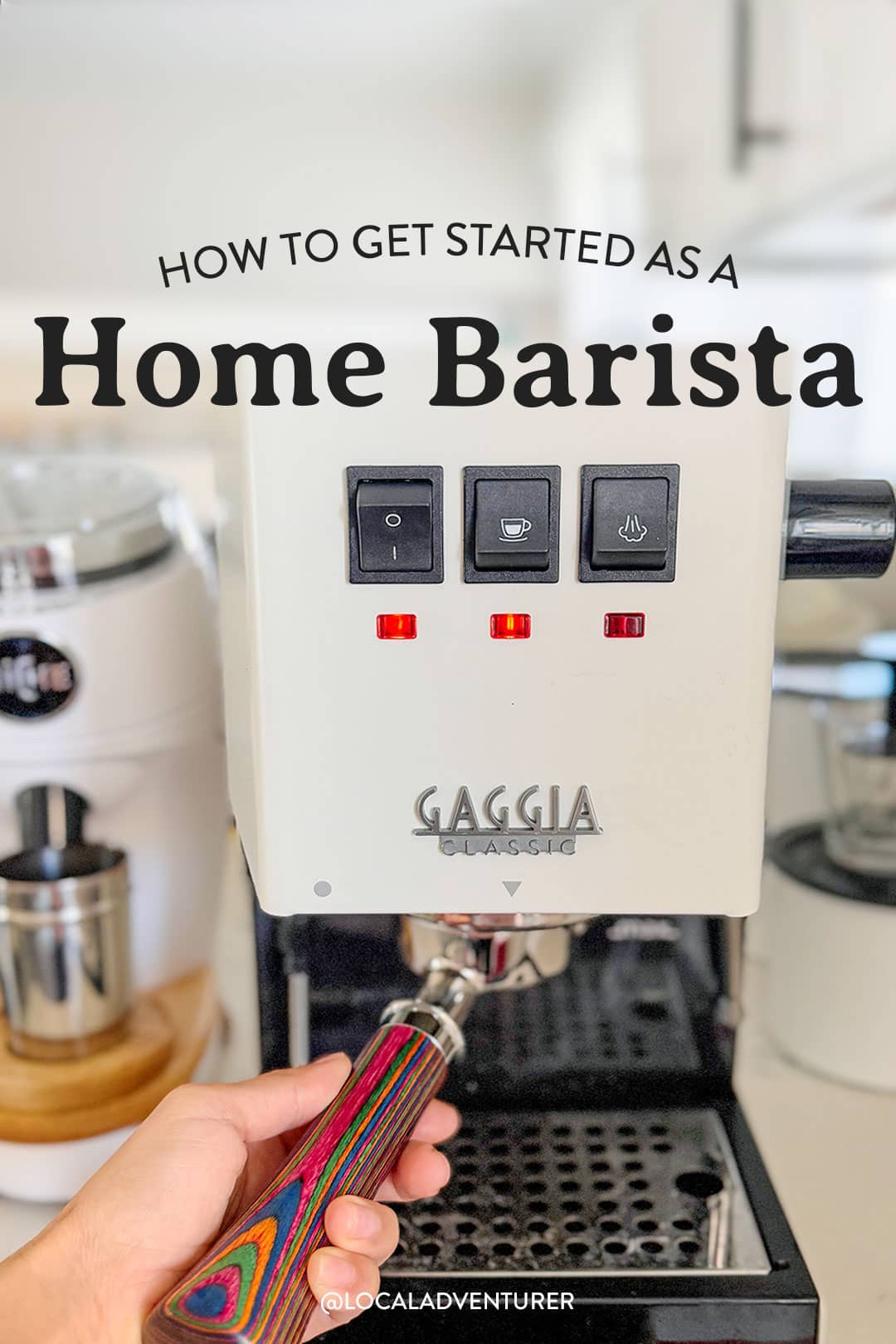
This post may contain affiliate links, where we receive a small commission on sales of the products that are linked at no additional cost to you. All opinions are always our own. Read our full disclosure for more info. Thank you for supporting the brands that make Local Adventurer possible.
Last Updated: November 27, 2023
Benefits of Having a Home Espresso Bar Setup
- Developing Skills – I’m a student for life, so learning the art of crafting the perfect cup is right up my alley. It’s my top reason for putting together a home espresso setup.
- Saves Money – even though the price is steeper up front, it can save you money in the long run.
- Convenience – no more lines or driving to your nearest coffee shop. Occasionally, we’ll still go socially and try a new spot in town, but now Caffe a Casa has you covered for your daily cup.
- Have it Your Way – you have more control over the coffee beans, roast levels, grind size, extraction time, and temps, and you can customize it to your taste preferences.
- Morning Routine – can be a cozy and positive way to start your day.
Pro Tip: Before you get set up, you want good-quality coffee beans and clean water. One of my favorite travel souvenirs is to pick up a bag of coffee beans from a local coffee shop (I recently loved this one from Capetown). You can test your water using this water quality test pen.
See More: 101 New Hobbies to Start This Year – Listed by Types of Hobbies
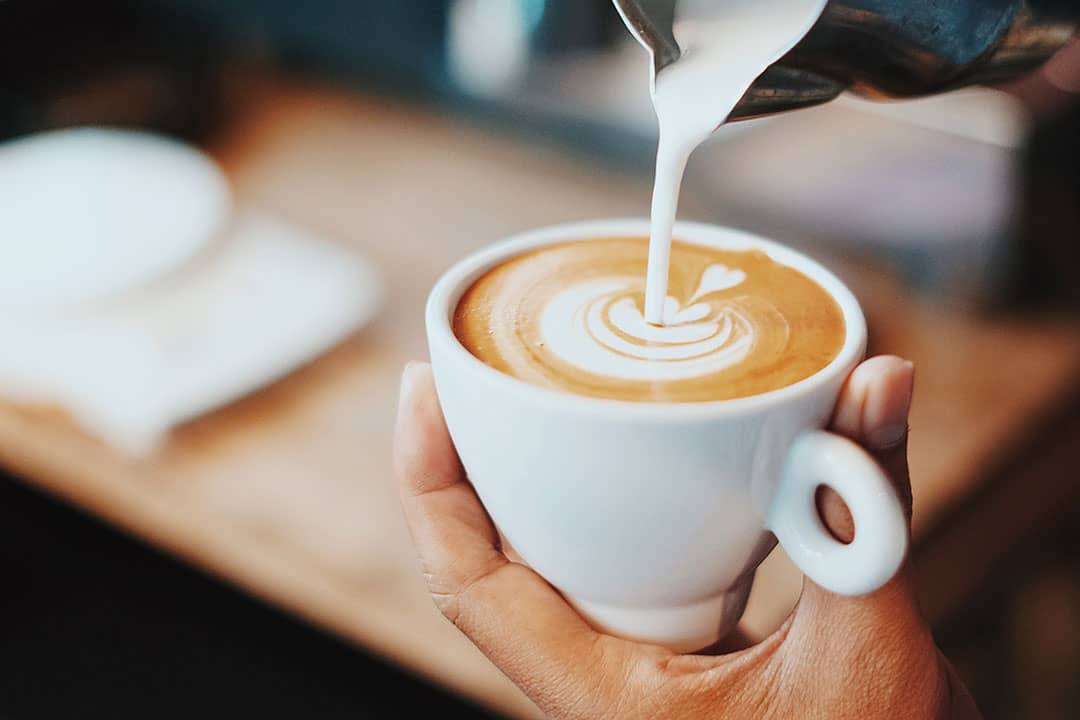
Best Entry Level Espresso Machine for Beginners
- Gaggia Classic Pro (Intermediate) is a sturdy, semi-automatic machine for those wanting more hands-on control. I got the GCP because I enjoyed borrowing and toying with my friend’s machine while his kitchen was renovated.
- Breville Barista Express (Beginner) is the most popular home espresso machine and what several of my home barista friends use. It has an okay built-in grinder, but you’ll eventually want to upgrade it.
- Breville Bambino Plus (Beginner) – compact and user-friendly with automatic features.

Best Home Espresso Grinder for the Home Barista
- Niche Zero Grinder (Intermediate) – This was a splurge for me, but our friends who use it told me it’s worth the investment. It’s one of the first things they upgraded. One major con is that it only ships from the UK, and shipping is expensive, too (add another $50).
- Manual Hand Grinders (Beginner) – 1Zpresso J and the Timemore Manual Hand Grinder are popular ones.
- Baratza Encore Coffee Grinder (Beginner) – user-friendly and reliable entry-level grinder.
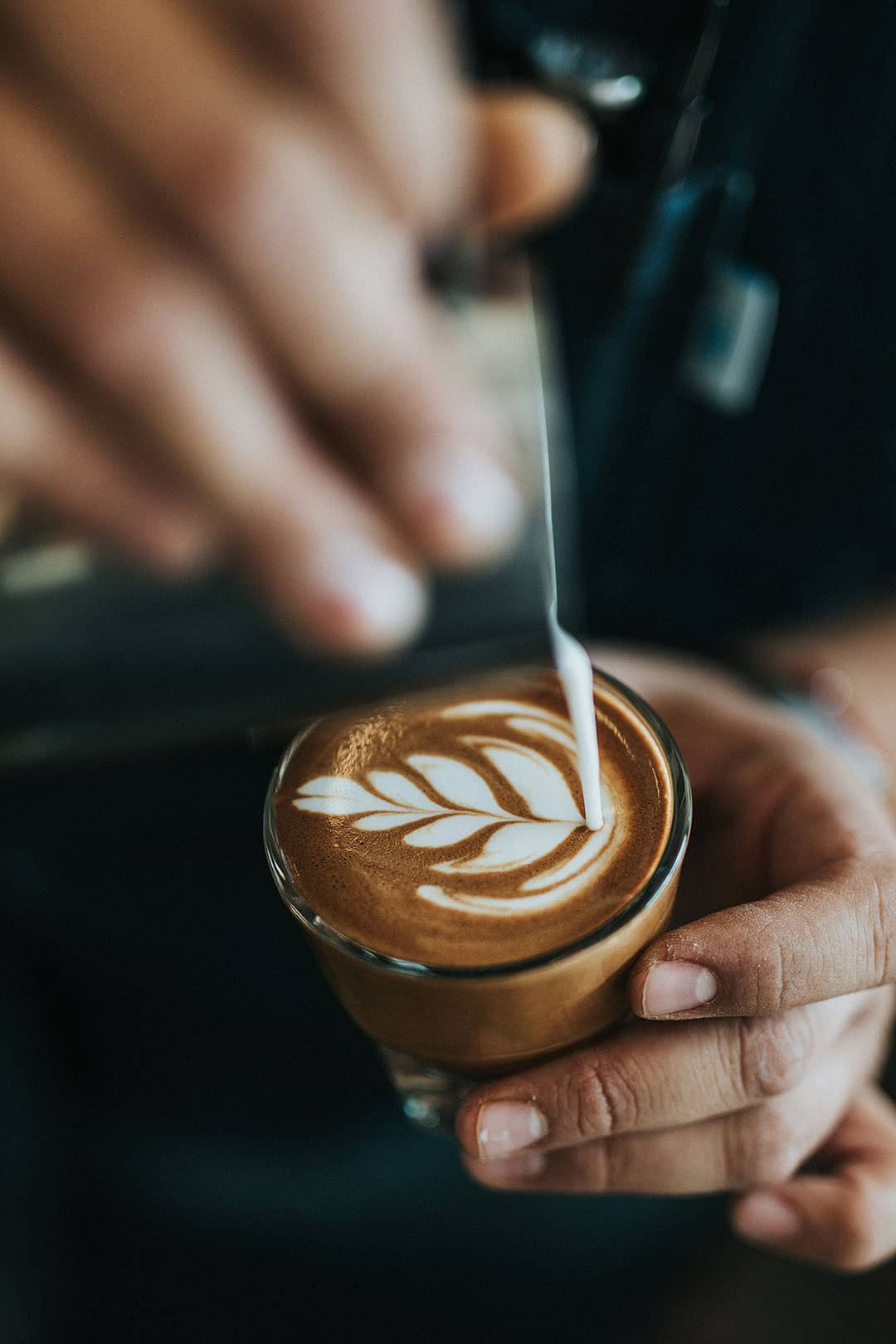
Must-Have Tools and Espresso Accessories for the Home Barista
- Tamper – for uniform and effective coffee puck compression. I am using my friend’s LuxHaus Tamper, the best budget tamper. He upgraded to a La Marzocco one, so I get his hand-me-downs. My Gaggia came with a weird-sized plastic one that immediately went into the donation pile.
- Digital Espresso Scale – for precise coffee dosing and timing your espresso shots. This is the one I use. Thinner ones will fit better under your espresso machine.
- Bottomless Portafilter – If you’re learning, it helps to have visual feedback when extracting coffee. When you’re shopping for one, make sure you have both the correct size and tab style. I learned the hard way when I ordered this pretty 58mm Portafilter with the wrong tabs.
- Coffee Canisters help reduce food waste by preserving your beans’ freshness. It is a must-have for our household since I’m the only one who drinks coffee. I use the Airscape Coffee Canisters and plan to order more for other food. Most food airtight storage locks in the air with food. I love their easy-to-use inner plunger lid that pushes out all excess air. I’ve also checked out my brother-in-law’s Fellow Canister, which has a cuter design, but the lid mechanism for pushing out air is annoying. PLUS, for every Airscape container purchased, they donate to a non-profit dedicated to ending food waste and hunger in the US.
- Milk Pitcher – for lattes and cappuccinos.
- Milk Steamer/Frother – for lattes and cappuccinos if your machine does not already have one.
Pro Tip: Order the correct sizes and tab styles for your machine.

Nice-to-Have Home Barista Tools and Equipment List
The order is based on how much they affect my process.
- Puck Screen – it helps distribute water and pressure evenly and keeps the group head clean.
- VST Precision Basket – it’s a popular choice among home and professional baristas for quality and precision. You get consistent extractions with their uniform and precise hole patterns better than +/- 30 μm. I have the 18 g ridgeless and 20 g ridgeless, the official filter at WBC competitions.
- WDT Tool (Weiss Distribution Technique) – breaks up clumps to make coffee grounds more uniform. You can also use a toothpick/paperclip.
- Dosing Funnel – This helps me avoid getting coffee grounds everywhere. I use this one with a magnetic base that clicks onto your portafilter.
- Jack Leveler – sits in your portafilter and spins to create an even surface. Some say it’s aesthetic and doesn’t change much for taste. I’ve been borrowing one from a friend (similar one) with an adjustable dual-head distributor and a hand tamper.
- Dosing Cup – My Niche came with the one I use. It gets staticky, which I hear goes away after several uses or with RDT (learn more in tips). I’ve also heard good things about the Acaia dosing cup with its anti-static finish.
- Low Profile Drip Tray – my current portafilter, cup, scale, and standard drip tray don’t fit under. Get a bottomless portafilter or a low-profile drip tray on Etsy to fix that.
- Knock Box – I don’t mind walking to my compost, but I see the appeal of having all your tools in one place.
- Tamp Station – includes a knock box and slots to organize your tools.
- Demitasse Cups and Latte Cups
Pro Tip: Pay attention to sizing. With precision baskets, a 58 mm leaves some room around the perimeter, and you may need a 58.4.
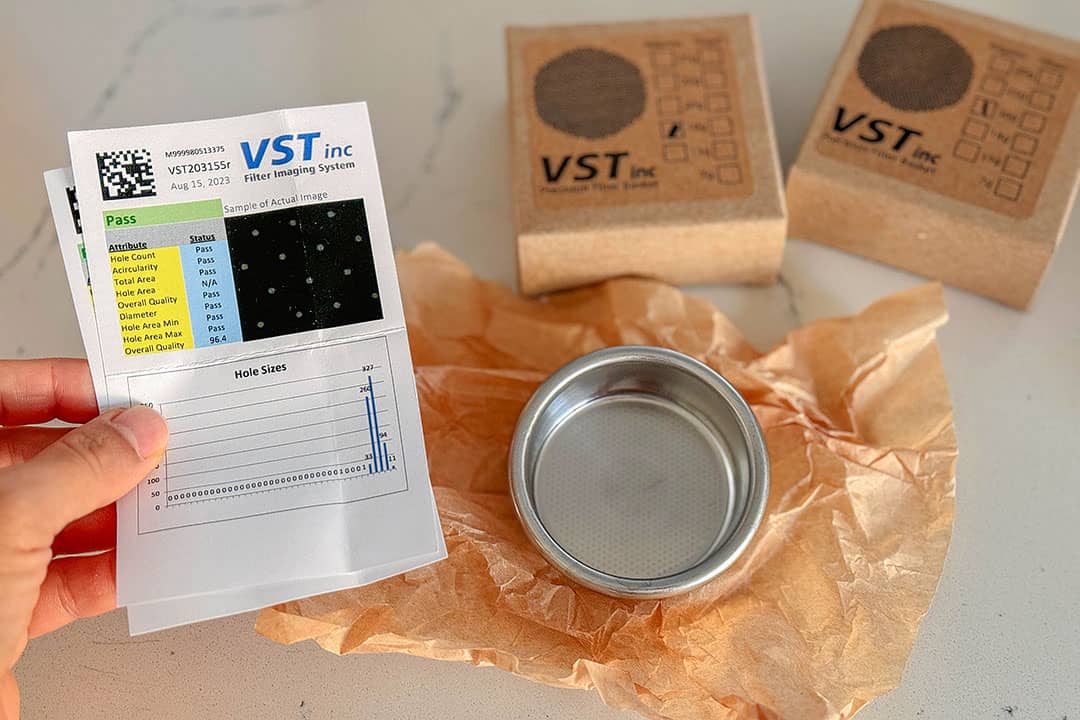
Best Espresso Machine Cleaning Powder and Tools for the home barista
- Urnex Cafiza Powder – clean coffee oils and residue from your espresso machine. It lasts much longer than the liquid kind.
- Backflush Insert – Use this with your cleaning powder to clean coffee oil and debris buildup.
- Cotton Dish Clothes – I use these cotton dish cloths and Swedish dishcloths to clean up my steam wand and spills.
- Pallo Cleaning Brush – a multipurpose brush to clean your group head and portafilter. This one’s a dupe.
- Water Softening Filter will keep your espresso machine cleaner by preventing scale buildup.
- Bar Mat – for coffee spills

How to Make Espresso at Home – A Step-by-Step Guide
Once you have quality coffee beans and all the essential espresso equipment, here are the steps to make espresso using an espresso machine.
- Preheat the espresso machine – Usually about 10-15 minutes. The water temperature must be stable, consistent, and ready to brew.
- Grind coffee beans – Dialing down the grind size for each coffee may take a few tries. Espressos have a finer grind size.
- Prepare portafilter – Dose the appropriate amount of coffee (usually 18-20 grams for a double shot) into a clean, dry portafilter.
- Weiss distribution technique (WDT) is an optional step to break up clumps in your coffee grounds. It can enhance extraction uniformity. You can buy this tool or use a toothpick or paperclip. Some people also use a jack leveler after WDT to further distribute.
- Tamp the coffee – it needs to be consistent, with level pressure.
- Insert Portafilter – lock and secure it into the espresso machine’s group head.
- Start Extraction – hot water is forced through tamped coffee grounds at approximately 9 bars of pressure. Extraction time is typically between 25-30 seconds. Read about temperature surfing here.
- Monitor the Shot – A well-pulled shot has a steady, dark, rich espresso flow with a golden crema on top.
- Stop the Extraction at the desired amount of espresso. A typical starting point is a 1:2 coffee-to-water ratio, so for 18 grams of coffee, you aim to extract 36 grams of espresso shot.
- Serve Immediately – espresso is best enjoyed immediately in a demitasse cup. Or add water or milk first, depending on the type of coffee drink you’re making.
Achieving the perfect espresso shot takes a combination of precise steps, practice, and experimentation. I write down the dose, grind size, and extraction time while dialing in my settings.
See More: Best Gifts for Photographers
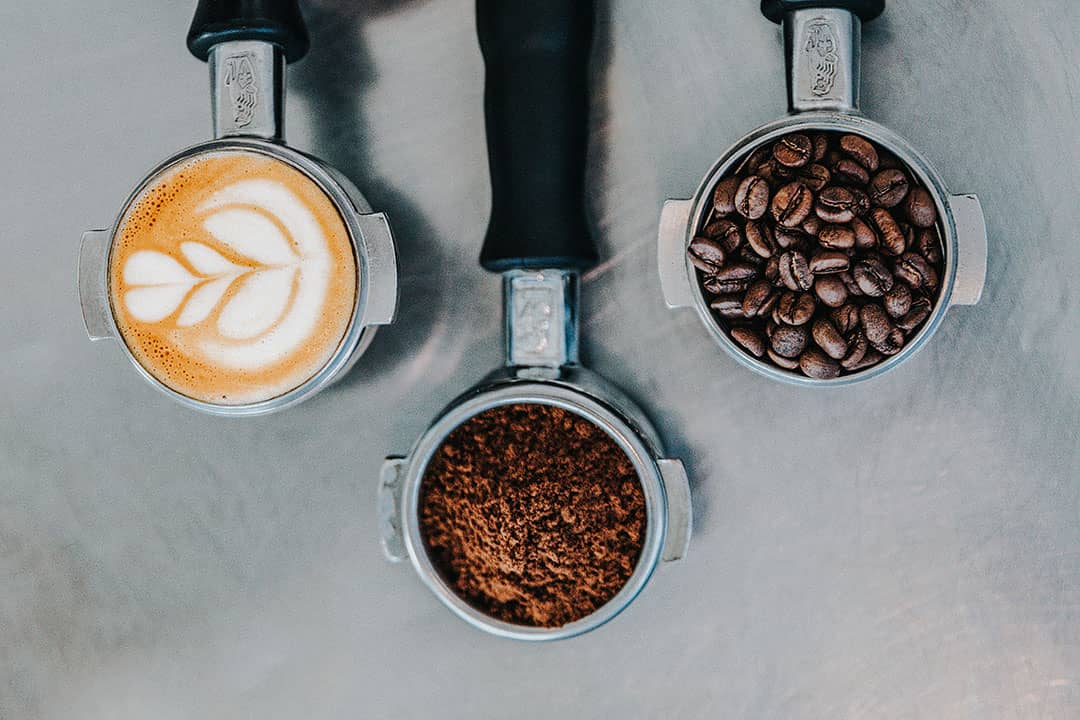
Essential Tips for Your Home Espresso Setup
- Practice, practice, practice – there are many variables, and one of the firsts to master is consistent tamping.
- Experiment with grind size and dose – even though there’s a rule of thumb for extraction times and coffee-to-water ratio, you may find something you like by breaking the rules.
- RDT (Ross Droplet Technique) – Some add water to their grounds to eliminate static in the grinder and dosing cup. Gaggia does not recommend RDT unless it’s a small amount of water. Instead, some use a wooden skewer on this Reddit thread.
- Temperature Surfing on the Gaggia Classic Pro – “Once you heat your espresso machine, it will oscillate between 184-209 degrees F (84.8-98.5 C). Flush the group head until the light turns off. Once the light turns back on, wait 10 seconds, switch on the steam wand for 5 seconds, then switch it off. – Lance Hedrick
- Poor Man’s Pre-infusion – this can “heal” some puck prep imperfections. Don’t turn on the steam, but open the steamer knob about ⅛ to shoot out hot water (have something ready to catch it). 8-10 secs pre-infusion, then close the steam knob and brew like normal. – Tip from Reddit
- The Aerocano is a fun “nitro brew” to experiment with your espresso machine.
- Keep your equipment clean to not affect the taste of future espresso shots.

Best Gifts for Coffee Lovers
- Coffee Subscription – I’ve only tried Atlas Coffee Club (they also have a tea subscription). Atlas sends you coffee from around the globe. There are a few others I will check out and let you know how they go. With any subscription, you’ll get some coffee you love and some you don’t.
- Cometeer – these flash-frozen coffee capsules from the best roasters in the country come in recyclable aluminum pods. They are great when you feel lazy but still crave delicious coffee. All you have to do is thaw and mix with water or milk. Get $20 off your first subscription. My coffee-lover friends mention how it tastes so good, sometimes better than their coffee.
- Gooseneck Electric Kettle – The Fellow Stagg is a splurge, the Bodum kettle is affordable, and there are plenty of mid-range kettles with temperature control.
- Barista Classes – You can learn anything from making better espresso to pouring latte art.
- Expresso Accessories can go from affordable to extra bougie, so you can decide what upgrade they get.
See More: 15 Best Subscription Boxes for Travelers
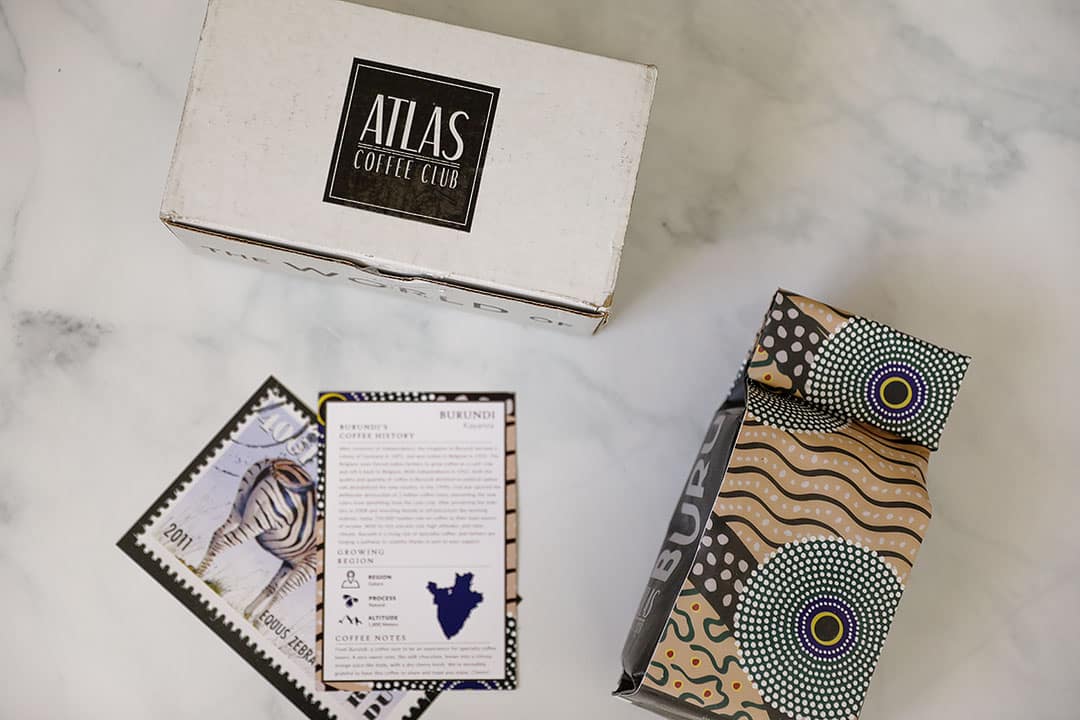
Frequently Asked Questions
How often should an espresso machine be cleaned? What happens if you don’t clean your espresso machine?
If you don’t clean your espresso machine, the mineral and coffee residue build-up can affect your machine’s water flow and pressure, affecting your coffee flavor.
How do I know if my espresso machine needs descaling?
Some signs include excessive brew times, unusual noises, you can see mineral deposits, or your machine may have a warning light.
How hard do you tamp espresso? What happens if you don’t tamp espresso hard enough? What happens if you tamp espresso too hard?
Calibrated tampers help you get more consistent tamping as a beginner. If you’re using a regular, old-school tamper with no spring mechanism, start with 15 pounds of pressure and then apply 20-40 pounds once the puck is formed. You can stand on a scale to watch your weight. If you don’t tamp hard enough, you may leave holes and create channeling. Some say tamping too hard also creates channeling, while others say there’s no such thing as tamping too hard if you have quality coffee beans.
What is the correct method of tamping?
Your tamping side hip must be toward the counter. Keep that wrist straight and your elbow at a 90-degree bend. Grab the tamper like a doorknob with your thumb and index finger at the base before you push it down.
Do you flush before you pull an espresso?
Flush your group head before and after you pull a shot of espresso to clean it from unwanted coffee grounds and oils.
Did you enjoy this post? Pin it for later
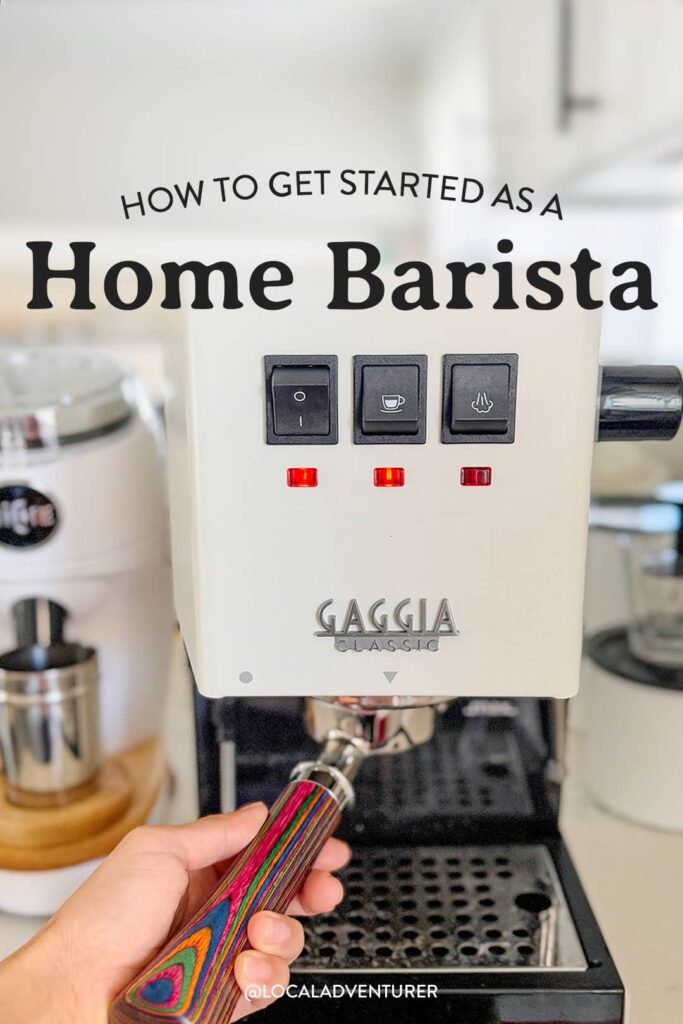
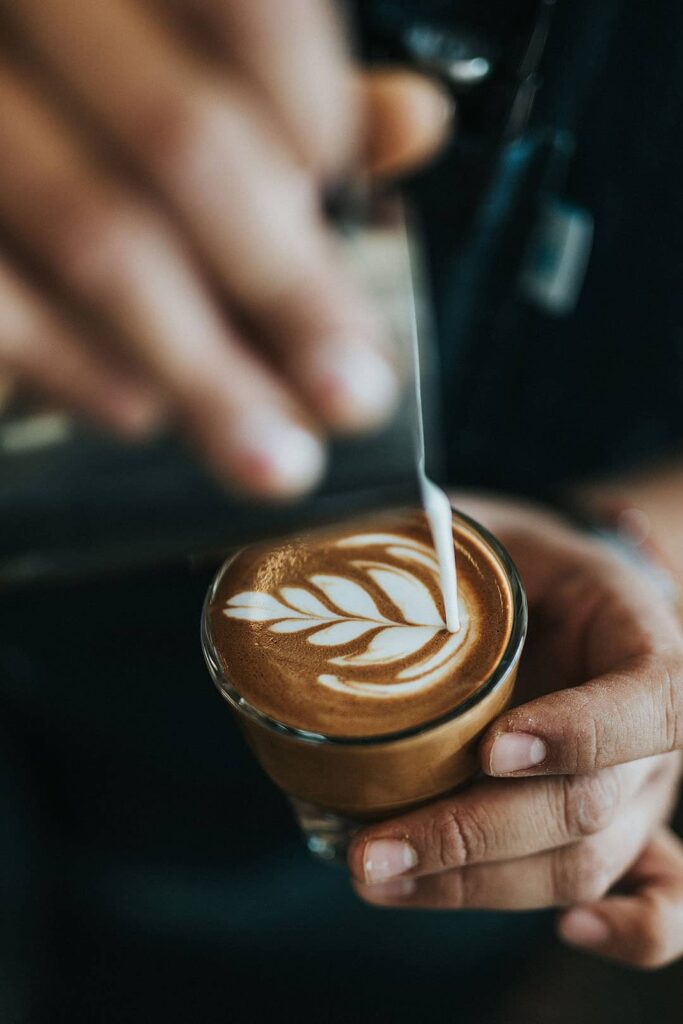
SEE MORE GIFT GUIDES FOR
⟡⟡⟡⟡⟡
“Discovery consists not of seeking new lands but in seeing with new eyes” – M. Proust

Esther + Jacob
Esther and Jacob are the founders of Local Adventurer, one of the top 5 travel blogs in the US. They believe that adventure can be found near and far and hope to inspire others to explore locally. They explore a new city in depth every year and currently base themselves in Las Vegas.
Follow on Instagram (E + J), YouTube, TikTok, and Pinterest.
The post How to Get Started as a Home Barista Espresso Bar Setup, Tools, Tips appeared first on Local Adventurer » Travel Adventures in Las Vegas + World Wide.

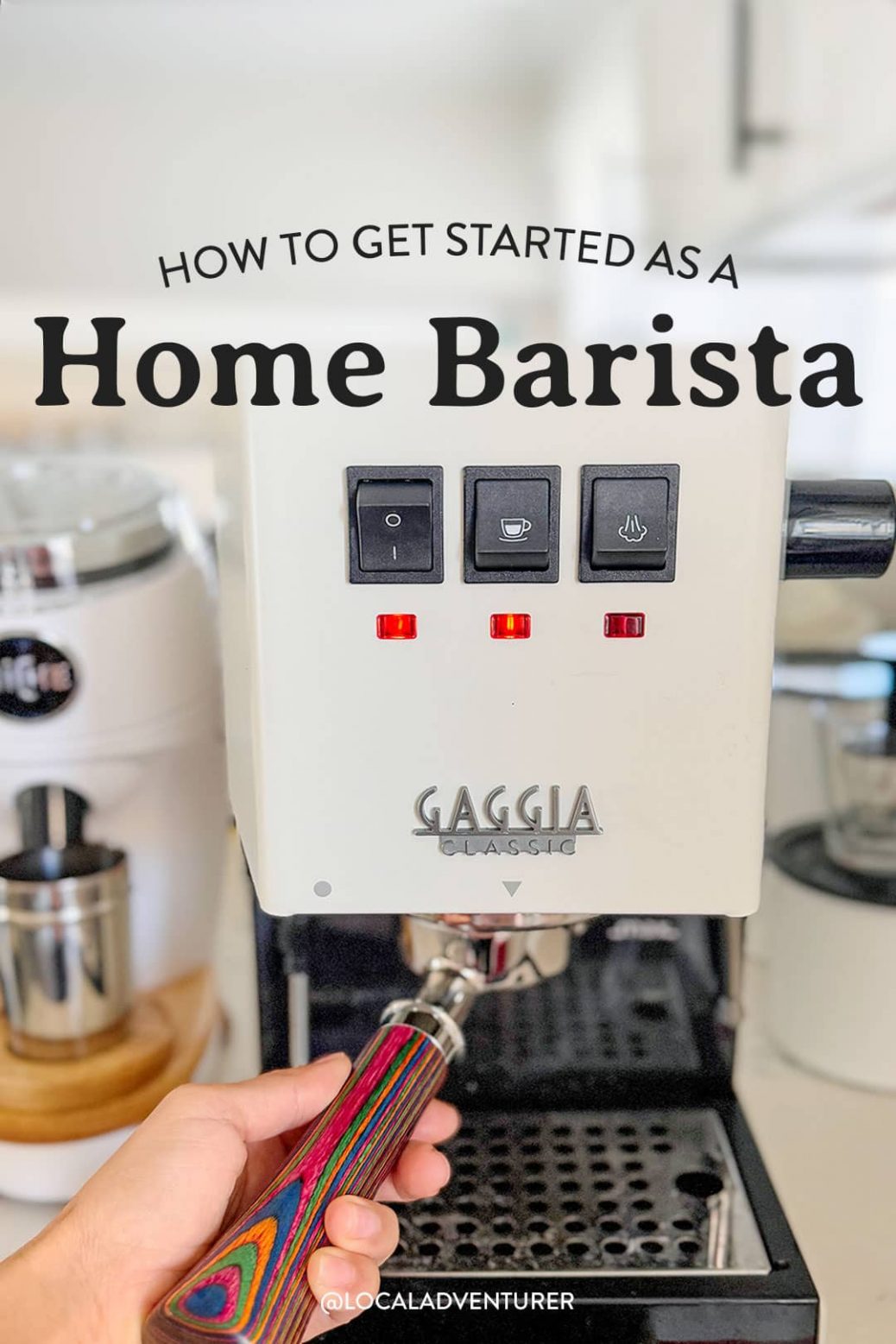
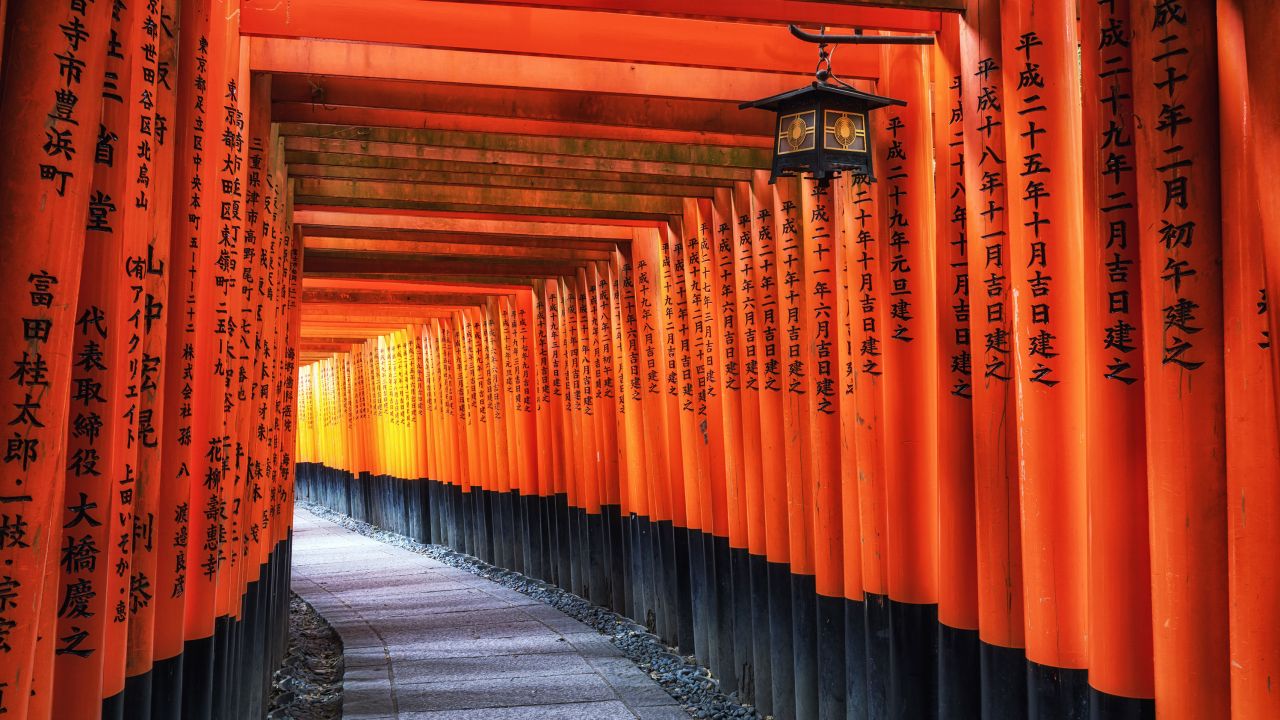


Recent Comments